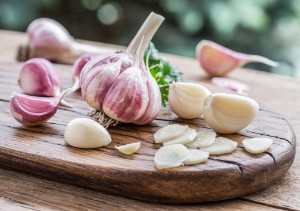What is good for human joints and cartilage – 11 products with proven effect
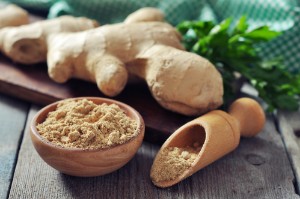 Inflammatory joint damage is a serious pathology, which is not only characterized by many unpleasant symptoms and a deterioration in the quality of life, but can also quickly lead to disability with subsequent disability.
Inflammatory joint damage is a serious pathology, which is not only characterized by many unpleasant symptoms and a deterioration in the quality of life, but can also quickly lead to disability with subsequent disability.
According to statistics among Russians over the age of 50, 38% of men and 17% of women suffer from joint lesions of inflammatory etiology (arthritis).
Unfortunately, medicine in most countries is unable to stop the progression of the disease and provide proper care to patients due to the extremely high cost of treatment (genetically engineered drugs and surgical joint replacement are needed).
Fortunately, diet correction can slow down the development of arthritis of any etiology.
Statistical surveys show that making changes to the daily diet leads to suppression of symptoms of inflammation of the articular apparatus in 24% of people. And another 15% of people report a slight positive effect.
There are a large number of products that have anti-inflammatory and antioxidant properties, and therefore can alleviate the general condition in patients with arthritis (mainly of autoimmune etiology).
Below we have reviewed a list of 11 foods that are most beneficial for the health of human cartilage and joints.
1. Fatty fish varieties

It is most useful to eat fish that contains a large amount of omega-3 fatty acids (salmon, sardine, trout, mackerel).
Proven that omega-3 fatty acids reduce the severity of pain and morning stiffness in patients with rheumatoid arthritis. Scientists recommend including fish in the course of mandatory non-drug therapy for arthritis.
One of the scientific studies, conducted in Finland, showed that eating fatty fish for 8 weeks leads to a decrease in the content of inflammatory mediators, as well as reduces the risk of developing cardiovascular diseases and type II diabetes mellitus.
Saltwater fish is also an important source of vitamin D. Recently, more and more attention has been paid to the problem of deficiency of this biologically active substance, since it is presumably one of the risk factors for the appearance of arthritis.
You should consume at least 2 servings of fish (200 g each) per week so that the anti-inflammatory properties are manifested as much as possible. Such a diet also helps to normalize the lipid profile and slow down the development of atherosclerosis.
2. Garlic
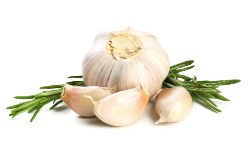 The active substances contained in garlic have pronounced chondroprotective, anti-inflammatory, and antioxidant properties.
The active substances contained in garlic have pronounced chondroprotective, anti-inflammatory, and antioxidant properties.
Marked garlic has a positive effect on the symptoms of arthritis by improving the functioning of cells of the immune system.
Special attention is given to sulfur compounds . They inhibit the destruction of the matrix (intracellular fluid) in chondrocyte-like cells by inhibiting a number of enzymes, thereby preventing the manifestation of osteoarthritis.
Korean scientists have come to the conclusion that thiacremonone contained in garlic reduces the intensity of pain in patients with rheumatoid arthritis, reduces the severity of edema (including in the periarticular tissues), accelerates the healing of damaged segments.
In addition, with regular addition of garlic to food, the risk of developing atherosclerosis and type II diabetes mellitus decreases.
It is recommended to eat 2-3 cloves of garlic per day.
3. Ginger
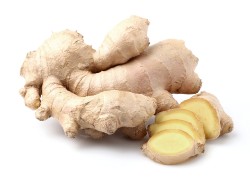 Ginger is widely used in many cuisines of the world, as well as in folk medicine.
Ginger is widely used in many cuisines of the world, as well as in folk medicine.
One of the scientific studies conducted in 2001 demonstrated that using ginger for 42 days reduces joint pain in 63% of patients.
At the same time, the action of the plant provided due to the content of a massive volume of substances that inhibit inflammatory reactions (suppressing the secretion of cytokines: tumor necrosis factor-a, interleukins 1,4,5).
Regular consumption of tea, soups, sweet confectionery, as well as ginger in its pure form helps to alleviate the symptoms of damage to the articular apparatus.
4. Broccoli
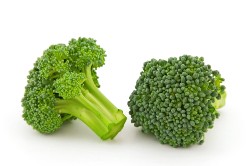 Since ancient times, broccoli has been considered one of the most useful foods and is used to treat many diseases.
Since ancient times, broccoli has been considered one of the most useful foods and is used to treat many diseases.
According to the accumulated data of Chinese scientists, the plant reduces the concentration of inflammatory cytokines (tumor necrosis factor-a, interleukins 1 and 6). As a result, the course of the inflammatory reaction in the joints and its symptoms disappear quickly.
Broccoli contains a special component – sulforaphane. According to the researchers, it prevents the formation of immune cells secreting inflammatory mediators.
5. Walnuts
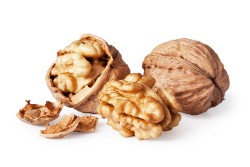 Walnuts contain a significant number of compounds with anti-inflammatory effects.
Walnuts contain a significant number of compounds with anti-inflammatory effects.
Scientific papers show that their addition to the diet has a positive effect on the course of rheumatoid arthritis and autoimmune intestinal diseases (Crohn's disease, ulcerative colitis). The effects are related to the content of omega-3 fatty acids in the composition of nuts.
Healthy polyunsaturated fats also reduce the intensity of pain, stiffness after sleep and improve overall health.
In addition to walnuts, scientists recommend eating pistachios, peanuts, hazelnuts and almonds. They contain a lot of useful substances and are recommended for use by rheumatological patients.
6. Berries
 Berries contain a lot of antioxidants (effective for cancer prevention and prevention of programmed aging of the body), vitamins, macro- and microelements.
Berries contain a lot of antioxidants (effective for cancer prevention and prevention of programmed aging of the body), vitamins, macro- and microelements.
American scientists claim that frequent consumption of strawberries (at least 2 times a week) reduces the concentration of inflammatory markers (mainly C-reactive protein) in the blood by 14%.
Additionally, strawberries reduce the risk of atherosclerosis, diabetes mellitus, coronary heart disease, myocardial infarction and stroke.
Due to the large number of flavonoids (quercetin, hesperidin, rutin) contained in berries, a pronounced anti-inflammatory effect is realized. Action proven on experimental animal models.
Strawberries, blackberries and blueberries should be consumed on a regular basis to provide the body with all the necessary nutrients and effectively combat arthritis.
7. Spinach
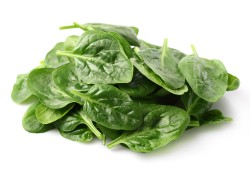 Experiments show
that the level of inflammatory cytokines in the blood is inversely proportional to the consumption of various types of leafy greens (including spinach).
Experiments show
that the level of inflammatory cytokines in the blood is inversely proportional to the consumption of various types of leafy greens (including spinach).
Spinach contains many antioxidants, the most valuable of which is kaempferol. It blocks the effect of inflammatory mediators on cartilage and joint tissues.
One study, conducted in 2017, demonstrated that there is a pronounced positive therapeutic effect in the treatment of rheumatoid arthritis and osteoarthritis with kaempferol.
8. Grape
 Grapes have antioxidant and anti-inflammatory properties, prevent the development of atherosclerotic changes in the walls of large vessels.
Grapes have antioxidant and anti-inflammatory properties, prevent the development of atherosclerotic changes in the walls of large vessels.
As a result of one experiment it has been proven that when consuming 250 g of fresh grapes daily for 3 weeks, there is a decrease in the concentration of inflammatory markers (adiponectin, interleukin 10) in the blood, which has a beneficial effect on the course of autoimmune diseases of the articular and ligamentous apparatus.
In addition, the skin of grapes, as well as wines based on it, contain a significant amount of resveratrol, a special substance that has a negative effect on the release of inflammatory response mediators into the bloodstream.
9. Olive oil
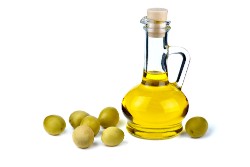 Olive oil has an extremely beneficial effect on the course of arthritis. Rodent studies have revealed
that the use of oil for 1.5 months slows down the processes of destruction of cartilage tissue and helps to delimit the focus of inflammation.
Olive oil has an extremely beneficial effect on the course of arthritis. Rodent studies have revealed
that the use of oil for 1.5 months slows down the processes of destruction of cartilage tissue and helps to delimit the focus of inflammation.
Using olive oil instead of sunflower oil and other types reduces the concentration of C-reactive protein by almost 40%.
Addition olive oil in food is an independent factor that prevents the manifestation of rheumatoid arthritis.
10. Cherry juice
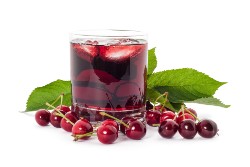 Cherry juice gives the body a wide range of nutrients: valuable vitamins, macro- and microelements, a number of amino acids.
Cherry juice gives the body a wide range of nutrients: valuable vitamins, macro- and microelements, a number of amino acids.
In one experiment it was proved that drinking cherry juice 2 times a day for 240 ml for 6 weeks reduces the severity of osteoarthritis symptoms, leads to the reverse development of inflammatory changes, increases the rate of regeneration of destroyed bone tissue.
The described effects significantly improve the overall quality of life of patients.
11. Turmeric
 Oriental spice is widely used in modern and folk medicine, cooking.
Oriental spice is widely used in modern and folk medicine, cooking.
The effect of turmeric is provided by the presence of curcumin in the composition, which relieves pain and reduces the focus of inflammation in the affected joints.
The effects of the plant exceed the effects of selective cyclooxygenase-2 inhibitors. For example, 350 mg of turmeric extract shows better results than celocoxib. And 500 mg, according to scientists, is more powerful than 50 mg of diclofenac.
Such a replacement option for drugs obtained by chemical means is very important for people who regularly take nonsteroidal anti-inflammatory drugs (the frequency of NSAID-associated gastropathies, gastric bleeding, liver and kidney damage decreases).
6 General Nutrition Tips
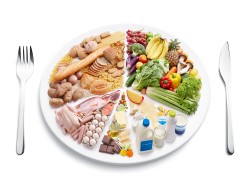 In order to maintain adequate joint function, preserve and strengthen joint and cartilage surfaces, it is recommended to adhere to the following dietary recommendations:
In order to maintain adequate joint function, preserve and strengthen joint and cartilage surfaces, it is recommended to adhere to the following dietary recommendations:
- Do not overeat. With an excess of nutrients (fats and carbohydrates), an increase in the volume of fat reserves is observed. Excess weight leads to increased stress on the joints, which significantly increases the risk of developing destructive pathologies. The intervertebral discs and knee joints are usually the first to suffer.
- Eat less fried food. For maximum preservation of valuable nutrients, it is recommended to bake, stew, cook or steamed dishes. From prolonged frying (especially with sunflower oil) It's worth giving up.
- Give up foods with a high content of dyes, flavor enhancers and preservatives. This group includes cakes, candies, pastries, carbonated and energy drinks. Failure to comply with this rule is fraught with metabolic disorders, the development of obesity and oncological diseases.
- Eat more greens. It is recommended to eat at least 1 tablespoon of spinach, lettuce leaves, green onions, and dill daily. Green plants contain large amounts of flavonoids that inhibit the production of inflammatory mediators.
- Drink more water. Normally, a person needs to drink at least 1.5-2 liters of liquid per day. In the presence of active inflammatory lesions of the joints, the volume of water increases to 2-3 liters per day. A low level of hydration provokes the development of osteoarthritis.
- Introduce collagen and mucopolysaccharides into the diet. They are necessary for the formation and maintenance of the integrity of synovial membranes and cartilage tissue on the surface of bones forming joints. Most of the mucopolysaccharides and collagen are found in fish (salmon), algae, bones and tendons of animals.
Macro- and microelements, as well as vitamins, are of great importance for the correct functioning of joints, cartilage and ligaments. The following substances must be present in the diet:
| Element name | Products that contain it |
| Selenium | Garlic, rice, oat flakes, meat products. |
| Iron | Buckwheat, liver of cattle. |
| Zinc | Meat and brown rice. |
| Boron | Any kind of nuts (especially pistachios and walnuts), raisins, seafood. |
| Calcium | Hard varieties of cheese, eggs, nuts, beets. |
| Phosphorus | Sea fish, legumes, cabbage. |
| Magnesium | Poppy seeds, cocoa, soy products, green vegetables, buckwheat. |
| Potassium | Greenery. |
| Sulfur | Garlic, gooseberries, onions, radishes. |
| Vitamin D | Cod liver, butter, egg yolks. |
| Vitamin C | Rosehip, kiwi, citrus fruits (oranges, tangerines, lemons, grapefruits). |
| Vitamin PP | Peanuts, sunflower seeds, chicken breast. |
| B vitamins | Offal (brains and kidneys of cattle), seafood (lobsters, oysters), bananas, brewer's yeast. |
Conclusion
Thus, nutrition correction can have a positive effect on the course of various diseases of the musculoskeletal system by inhibiting the release of inflammatory mediators and increasing regenerative potential. Along with the use of healthy foods, it is necessary to adhere to all the recommendations of the doctor.


